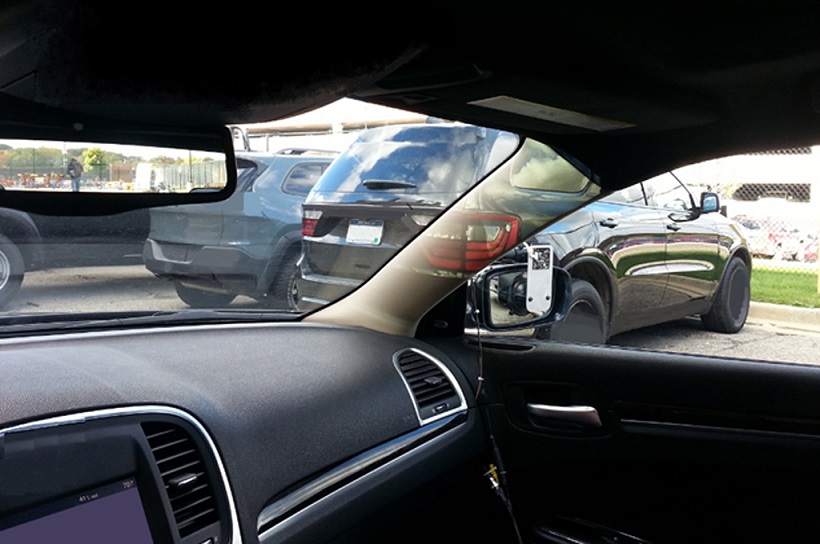Continental's 'see-through' A-pillars use cameras
Continental's 'see-through' A-pillars use cameras, OLEDs to nix blind spots
A-Pillars aren't getting any thinner, so we may as well try to make them "invisible."

As cars get bigger and bulkier, whether for safety or design's sake, blind spots are getting bigger, too. Some automakers have recently filed patent applications for technology to get around this, but the supplier Continental has its own solution.
This month, Continental previewed technology that it believes could reduce or eliminate blind spots related to a car's A-pillar, which is the part of the car's body between the windshield and the front window. Its Virtual A-Pillar technology uses already existing technology to make these pillars "see-through."
Here's how it works. A surround-view camera captures the area around the vehicle, and it takes the relevant part (the part the A-pillar might obscure) and feeds that live image to an OLED display wrapped around the interior portion of the A-pillar. A head-tracking camera in the dashboard then shifts the OLED display's output based on the driver's head position to ensure the driver sees what's on the other side of the pillar.
Continental notes that A-pillars can obscure more than 3 feet's worth of area at a distance of 12 feet from the vehicle, and that blind spot grows as the distance does. This can obscure pedestrians about to enter intersections, creating some serious safety concerns. Continental's system attempts to even the playing field by enhancing the driver's visibility.
Automakers are also looking into this tech. Most recently, Hyundai and Kia filed a patent application that works similar to Continental's, albeit without a head-tracking camera. Last year, Toyota filed a similar patent application, although it relies on mirrors to "bend" light around the A-pillar instead of using expensive displays. In 2014, Jaguar Land Rover previewed a similar technology, too. In the next few years, as camera and screen costs go down, this could become the Next Big Thing in auto safety.
Here are Apple`s Solution
How to effectively avoid traffic accidents caused by blind spots of drivers? According to foreign media reports, Apple has recently obtained a new patent. The surrounding environment is recorded by the camera, and simultaneously projected on the window or windshield, so that the driver can see the environment blocked by the A-pillar, eliminating the blind area of the car.
In addition, the camera installed on the windshield can also recognize the driver's face, detect the driver's facial expressions, and recognize the driver's facial expressions, the vehicle's rearview mirror will retract when appropriate Or reach out.
A 14-year-old girl named Alaina Gassler had previously invented a similar approach. Her solution was to add a camera outside the A-pillar of the car, and then project the picture into the A-pillar to make the A-pillar "transparent". Although the Alaina Gassler method is similar to the Apple patent, the patent application date of the latter is 2016, and the technology is more complicated. At the same time, it has higher requirements for car windows.
It is said that Apple's patent can be used for both ordinary driving and autonomous driving. However, it remains to be seen whether the patent will appear on Apple cars.

